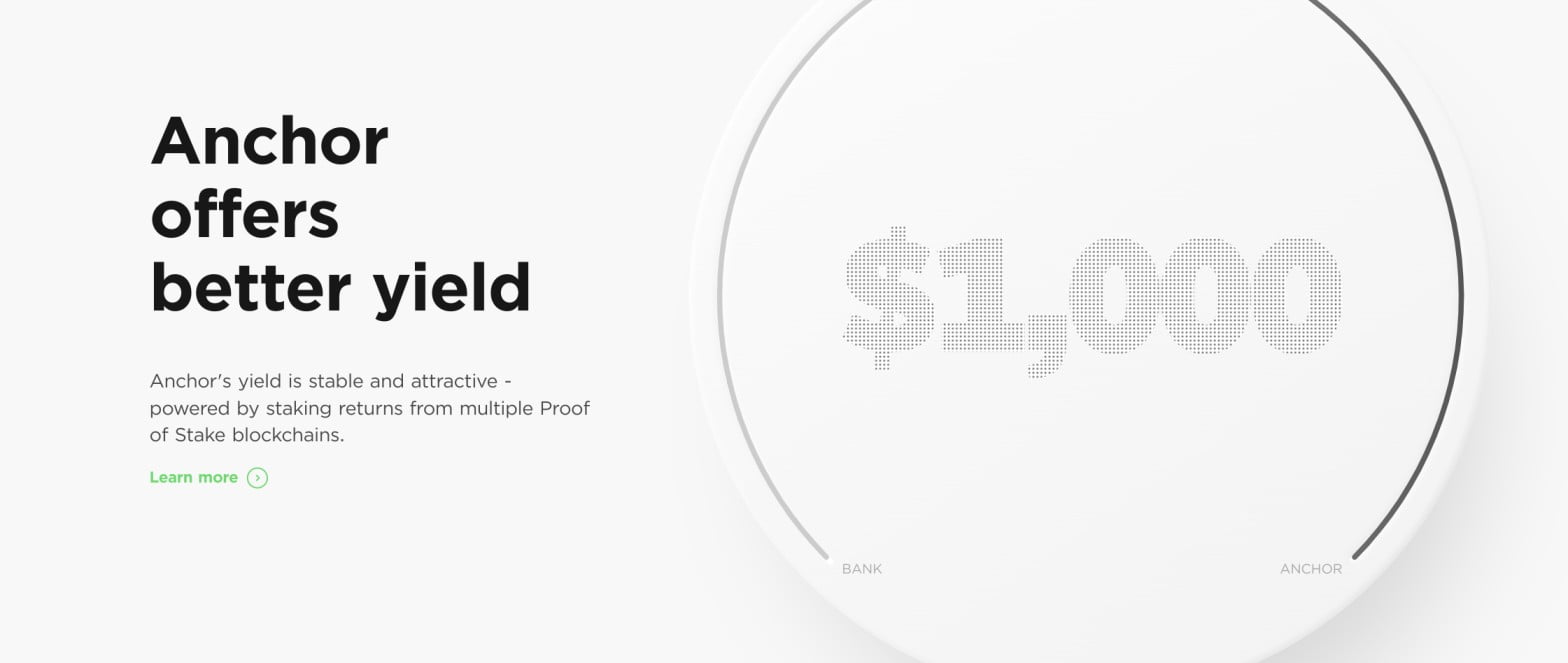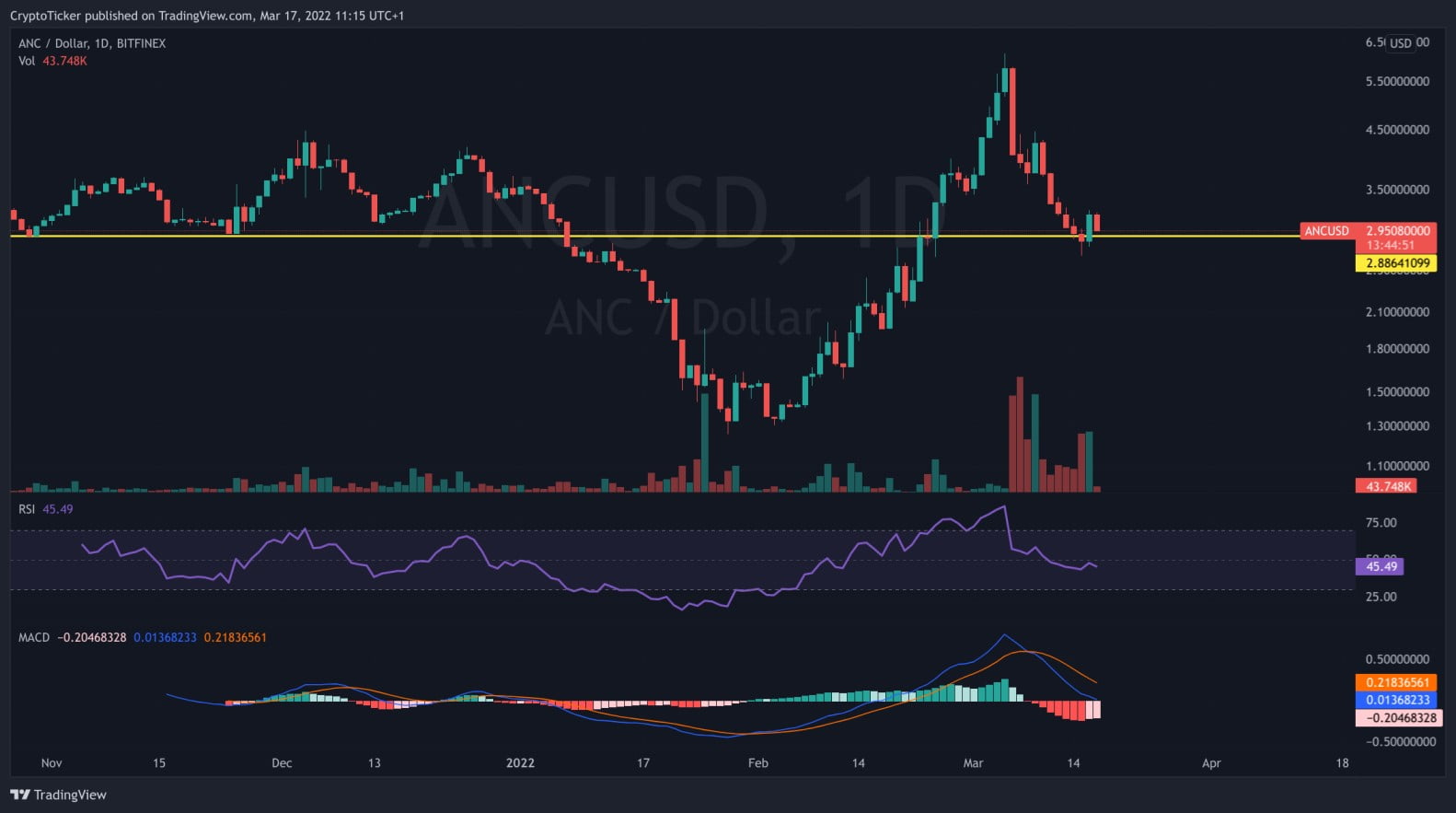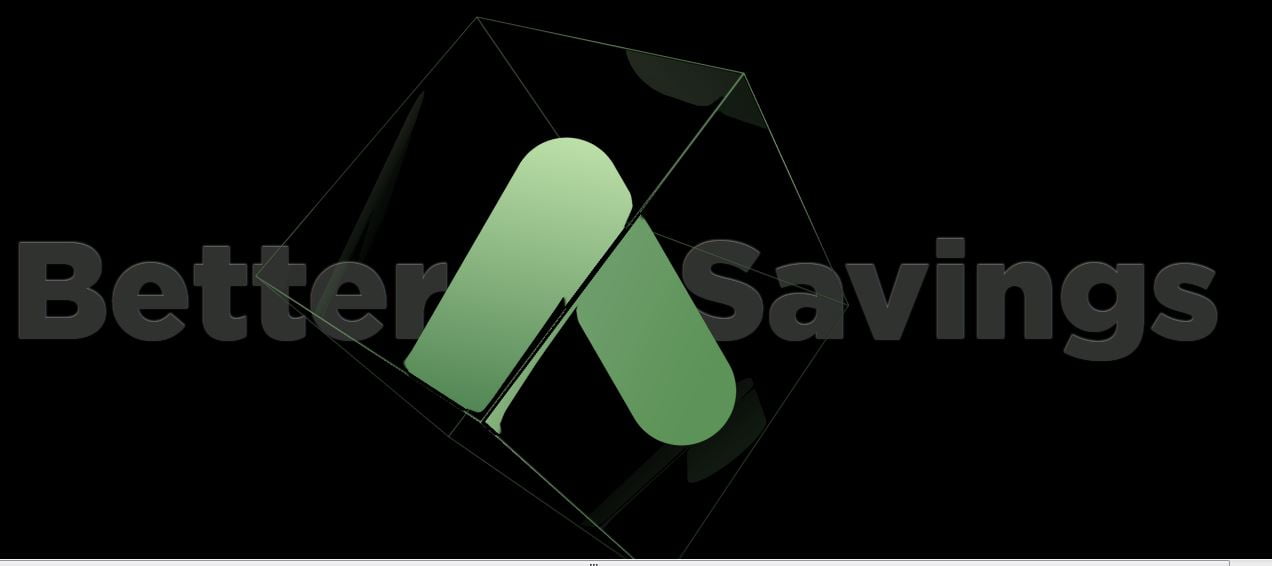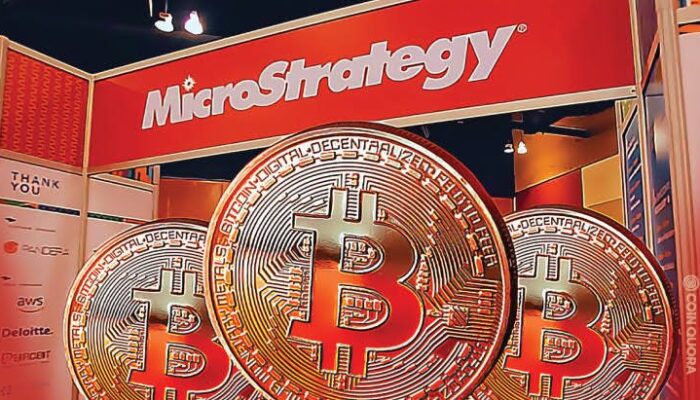Since the creation of the first DeFi project- MakerDAO, in 2015, the growth of the DeFi space has been tremendous. Ethereum and other blockchains continue to provide a space for these Decentralized Applications (DApps) and Decentralized Exchanges (DEXs) to thrive. However, one of such DeFi projects making waves in 2022 is the Anchor Protocol, a delight to crypto users. In this article, we will be taking a detailed look into Anchor Protocol to determine what traders can expect from the project in 2022.
What Is Anchor Protocol?
Anchor is a lending and borrowing DeFi platform built in March 2021 by Daniel Shin-Do Kwon co-founded Terraform Labs (TFL). It is a decentralized savings platform offering low-risk rewards on deposits of Terra stablecoin (UST). Terraform Labs is the organization behind the Terra layer-one blockchain that has become a strong provider in the crypto space. One of the reasons behind the creation of the Anchor Protocol was to drive demand for Terra’s native stablecoin-UST.

The rates on the protocol are determined and governed by staking rewards from major proof-of-stake blockchains. This is why they are currently one of the most stable and best rates in the DeFi market today. The lenders on the protocol are eligible for yields of about 20% annually. Lenders will invest their UST for huge rewards and benefit from the protocol’s low volatility offering. On the other hand, borrowers who bank on collateralizing their LUNA assets earn rewards while not giving them up. The native and governance token of the protocol is ANC.
How Does Anchor Protocol Work?
Anchor Protocol allows traditional finance participants to integrate successfully with DeFi and many DApps. It also possesses an API that fintech and exchanges can incorporate into their system, providing interest-bearing savings accounts. The protocol creates a money market that allows lenders to earn rewards on their UST. Alternatively, this market also allows borrowers looking for UST to find them cheaply. To borrow UST on the protocols, borrowers will lock up Bonded Assets (bAssets) as collateral on Anchor. Borrowers are eligible for up to 60% of their deposited collateral in UST. They are also required to pay an interest rate slightly higher than that paid to lenders. Fulfilling the above conditions, borrowers are eligible for UST credit via the protocol’s borrowing ratio model with an agreement in place.
-----Cryptonews AD----->>>Sign up for a Bybit account and claim exclusive rewards from the Bybit referral program! Plus, claim up to 6,045 USDT bonus at . https://www.bybit.com/invite?ref=PAR8BE
<<<-----Cryptonews AD-----
On the other hand, lenders will earn rewards from the diversified streams of staking rewards accrued on the protocol. Lenders will connect their Terra Station wallet to Anchor by paying a transaction fee of 1.6 UST. This will qualify them for the annual 19.5% interest rate incentive. This reward will be converted to stabelecoin and given to the lenders in the form of a stable yield. The deposited stablecoins on Anchor are in the form of Anchor Terra (aTerra). Lenders on the platform also earn continuous rewards by holding onto aTerra- the initial deposit fund of Anchor. The protocol developers can interact via Anchor Earn, Anchor.js, and EthAnchor modules.
Features Of The Anchor Protocol
Friendly User Interface
Unlike many other money market DeFi protocols like Aave and Compound, Anchor is unique in its structure and appearance. The protocol boasts a user-friendly user interface that is easy to operate for even novices. Its functionalities are straightforward to access for both lenders and borrowers, making it easy to do their business efficiently.
Open And Transparent
The Anchor Protocol is transparent and open to all. It is also very scalable and allows for third-party applications and interference. Crypto users outside the protocol can easily save, earn, and utilize its services.
Zero Volatility
Anchor Protocol ensures that depositors’ yields do not get any exposure to volatility via Terra stablecoin money market. Terra stablecoin depositors will receive stablecoins in return, avoiding the significant fluctuations of other crypto assets.
Lenders and Borrowers Earn
Anchor Protocols provide lenders with high and stable yields realized from the reards of the bAsset collaterals of borrowers. Lenders also have the opportunity for instant withdrawals accrued via holding aTerra. There is also an insurance cover for lenders that covers their principal deposits. Borrowers also get incentives via the ANC tokens that the protocol distributes.
Highly Secured
Anchor protocol resides on the Terra Blockchain, which is a highly secure layer-1 blockchain. The Proof-of-Work consensus mechanism blockchain also uses Tendermint to secure the network. The protocol has also been audited three times by Cryptonics and Solidified and found to be secure.
Anchor Liquidation
The protocol is not only open to borrowers and lenders but also to external crypto users. Crypto users who do not want to borrow or lend can join the Anchor Liquidation Pool (ALP). The ALP guarantees users a higher-risk, higher-reward product that offers liquidation funding for other products in the protocol.
What Is ANC Crypto?
ANC is the native and governance token of the Anchor Protocol. It is available as a native CW-20 token on Terra and an ERC-20 token on Ethereum. The token currently serves to propose, change parameters, and vote on the protocol. Holders can deposit the token to create new governance polls. ANC is also used as an incentive to bootstrap borrow demand and initial deposit rate stability. The protocol distributes the tokens to ANC stakers, proportional to the amount staked. The protocol also distributes ANC tokens to stablecoin borrowers, proportional to the amount borrowed. The current price of the token is a little below $3 at the time of writing.

The Protocol fees generated in Anchor serve to purchase ANC tokens from Terraswap. The initial maximum supply of the token is pegged at 1 billion coins, distributed over four years. The token’s inflation rate will decrease annually until it hits the 1 billion coin maximum distribution. No new ANC token will be available after the initial four years of issuance. The current circulating supply of ANC is 222million, with 20% dedicated to investors and borrower incentive set at 40%. 10% of the token distribution is reserved for its team, community fund, and Luna staking rewards. The last 10% of the distribution is for ANC liquidity and Airdropping. Like other tokens in the Terra Blockchain, ANC is also available on Ethereum and Binance Smart Chain (BSC).
How To Buy ANC On Binance
On the 25th of January 2022, Binance informed its customers that ANC would be available for trading pairs on the exchange. However, The token is available for purchase on OKX, Mandala Exchange, Kucoin, and Gate.io. To buy ANC on Binance, you will follow the three steps below;
Step 1 – Sign Up

The first step is logging in or signing up on Binance is the first for new users. This process is usually seamless and complete after supplying a few KYC details. You will also need to verify the information you provided. However, existing users will only need to log in to their accounts.
Step 2 – Fund Your Account

After creating an account and logging in, it is essential to have enough funds or digital assets in your account. This will enable you to complete the purchase of ANC smoothly. Funding your Binance account is easy and could be done via a bank transfer or a debit/credit card.
Step 3 – Purchase ANC Crypto

You will now use the funded account to purchase BUSD, BTC or USDT on Binance. After that, you will search for ANC and complete your purchase by pairing ANC/BUSD, ANC/BTC or ANC/USDT. The purchased asset will automatically reflect on your account.
Is ANC A Good Investment?
Since the launch of the token last year March, the token’s performance has been averagely good. It has indeed fallen from the All-time-high (ATH) price of $8 it attained shortly after launch. However, it has started to bounce back and is predicted to go on another rally in 2022. Its market capitalization is currently around $3,087,410,522, amidst a surging 24hour trading volume of $64,548,882. However, like every blockchain entity, the future of the token also depends on the performance of the Anchor Protocol. Anchor Protocol solves a core problem that borrowers face by offering low-interest rates to customers.
Borrowers also receive guarantees that their collateralized assets are untouchable and can earn rewards for keeping them in the system. This will continue to see the influx of crypto users into Anchor, which eventually will impact the fortunes of ANC. Anchor reward system for lenders is one of its kind, as it has continued to attract users into the protocol. Overall, the Anchor Protocol (ANC) is a strong project that centers on the entire Terra ecosystem. There are predictions that if it goes on a rally, it may hit $10 by December 2022. However, while nothing is certain and the project’s future is not ascertained, Anchor appears to be on the right track.
Conclusion
Created by Terraform Labs in 2021, Anchor Protocol is a lending and borrowing DeFi platform. The protocol establishes a money market that allows lenders to earn rewards on their UST. Alternatively, borrowers get UST cheaply, and their collaterals are not affected. The native token of the project is ANC and is available on Binance, OKX, Mandala Exchange, KuCoin, and Gate.io. Despite a decline in prices from its ATH, crypto analysts expect ANC to hit giants strides in 2022.






